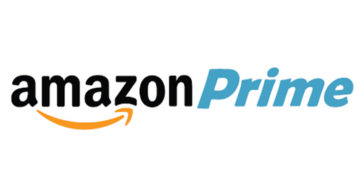Where most screens fit snugly in the palms of our hands, the phrase ‘size matters’ could seem somewhat irrelevant when talking about advertising in today’s digital spaces.
But Connected TVs (CTVs) – an umbrella definition for smart TVs, boxes, sticks and devices which can stream content via broadband – offer brands a new realm of high impact, big-screen media space.
A cordless audience on the rise
In 2014, one in ten UK households owned a CTV. In 2018 around two thirds of households have one, and this figure is expected to grow to around 75% in 2020.
Given that over 90% of UK homes also have broadband connections of at least 4 Megabits per second (Netflix recommends 3Mbps for SD quality and 5 Mbps for HD quality), there is a significant opportunity for market growth.
If you are in any doubt, uptake of CTV in the U.S. provides a handy yardstick. There were 62 million American smart TV users in 2016, and that figure is projected to grow to over 109 million by 2020. While obviously not in the same ballpark in terms of total tv-watching population numbers, the UK does possess the largest CTV market in Europe.
Spend on CTV advertising is expected to grow to £220m in 2020 – that’s double the figure we saw just two years ago in 2016. This estimate fuelled by (not so secret) industry whispers that both Netflix and Amazon plan to launch CTV advertising space on their platforms.
Targeting hard to reach segments
It’s not just the increasing access to swathes of video watching audiences that’s exciting. Particularly attractive to marketers is the detail of audience targeting that they can achieve. Data available from content-sources, authentication and device ownership provides the means of identifying even the most niche audiences. The so-called cord-cutters and cord-never generations (who eschew traditional multi-channel TV subscriptions in favour of internet TV like Amazon) have been difficult to reach – until now.
Interestingly, CTV also offers the opportunity for greater cross-device marketing. Studies show that audiences are often most active on social media when watching TV. Research conducted by YuMe suggests that 87 percent of consumers reported using over-the-top (OTT) devices (smartphones, computers, tablets) when watching digital content on a CTV for a range of activities:
- Texting with friends about the programme or film
- Searching for information about it
- Interacting about it on social media
- Searching for reviews of a product featured
- Posting on social media about an ad viewed
A useful addition to cross-channel marketing strategies, CTV provides brands with a new way of reaching audiences plus more creative ways to interact with them.
CTV ads stick
Despite its relative infancy, investment in CTV advertising seems to pay dividends. Research conducted in 2017 found that for pre-roll ad views (the ads which play just before videos start) unprompted recollection among viewers was 73%. That’s 4% more than for mobile and 8% more than desktop views. Considering that eye-tracking results in the same study revealed almost 90% of the pre-roll ad was viewed on CTV (with 81% and 78% on mobile and desktop respectively), that’s not unsurprising.
Coupled with the fact that TV screens are getting bigger, giving viewers an immersive cinematic experience from the comfort of their sofa, the ‘lean-back’ branding opportunities for advertisers are clear.
CTV lends itself to high quality ads, with many providers offering HD placements which are proven to resonate better with consumers. If big streaming providers such as Netflix and Amazon do start serving ads, which is widely predicted, it will likely be very important that the ads served are relevant to keep consumer satisfied.
Trackable ROI
While initial research demonstrates that CTV advertising can be successful compared to other platforms, the availability of quality inventory is still relatively fragmented with a large number of ads being sold privately and not served across the major broadcasters.
Establishing effective methods for measurement and ROI for investors in this new space, therefore, presents a challenge and the industry is still undecided how best to monitor activity.
But in the States, trials for tracking and evaluating meaningful CTV activity are well under way. One such collaboration between online video advertising platform SpotX and audience measurement data collectors Nielsen enables data from both parties to be collected and analysed.
Now is the time to embrace CTV
Ad recall, effective targeting, viewability and measurability should be at the top of every brand’s online marketing wish-list, and CTV advertising provides the opportunity to achieve all of these. When Amazon and Netflix do push the button and push CTV globally with high quality inventory, as will undoubtedly be the case, brands need to be primed and ready.





